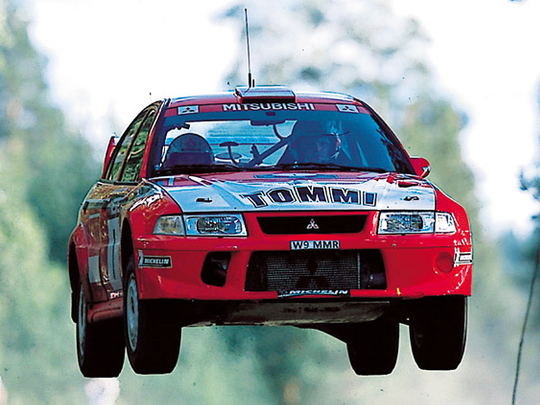
The story of the Mitsubishi Lancer Evolution is one of ongoing development. But, two factors have remained constant — a 2.0-litre turbocharged motor and a four-wheel drive system. Mitsubishi realised the importance of these elements in the development of the saloon and tweaked them continuously through aggressive competition in one of the world's premier forms of motorsport — the World Rally Championship.
The Evo has been evolving with each generation ever since the car was launched in 1992. It started life with 244 horses and 309Nm of torque with a top speed of 228kph. When the Evo II arrived in 1993, it received bigger swaybars to help improve handling while the same engine as the previous year was massaged to produce eight extra horses. The third gen got an aggressive front end, side skirts and bumpers while a bigger turbo helped make 270bhp, but torque remained unchanged since the car's inception.
Then in 1996 came the first big improvement. Mitsubishi changed the platform of the Lancer, rotated the engine by 180 degrees to improve its balance and released two versions of the car — the lightweight competition RS and the technology-packed GSR. Both used a new twin-scroll turbo to generate six more horsepower and 330Nm of torque — a significant increase. The Evo IV was hot stuff.
Improvements continued with the fifth, sixth and seventh models, but it wasn't until the Evo VIII in 2003 that the US got its first taste of what had already become a global phenomenon. The style of the car, with its aggressive bodywork, huge wings and flared wheelarches, was not appreciated by everyone, but those interested in performance could certainly see that this was something special.
Mitsubishi chose the Geneva motor show to unveil the ninth generation in 2005, which now had variable valve timing and 287bhp. The present model, the Evo X, boasts 291bhp, 366Nm of torque and a top speed of 250kph.
In rallying, you go with what works, and what doesn't is scrapped. Therefore, over the years, much of the car's development was courtesy of the WRC. A lot of the things Mitsubishi learnt filtered down into the cars in the showrooms.
Sometimes, beating your opponent isn't enough — being virtually unbeatable is the ultimate goal. One driver did that with the Evo. Tommi Mäkinen joined the WRC team in 1995 and he launched an unprecedented run of domination of the series. He would go on to win four consecutive WRC drivers' titles, with the manufacturers' title also going to Mitsubishi in 1998.
The Lancer Evolution and Mäkinen became known worldwide as one of the most dominant car-driver pairings in motorsport history.
Competition improves the breed, and that's certainly the case with the Evo — a product of more than 30 years of rallying pedigree.
FACTS
Car Mitsubishi Lancer Evolution
Production 1992–present
Assembly Mizushima Plant, Kurashiki, Okayama
Class Sport compact, World Rally Car, Sports saloon
Layout Front engined, four-wheel drive
Engine 2.0-litre, turbocharged, four-pot











